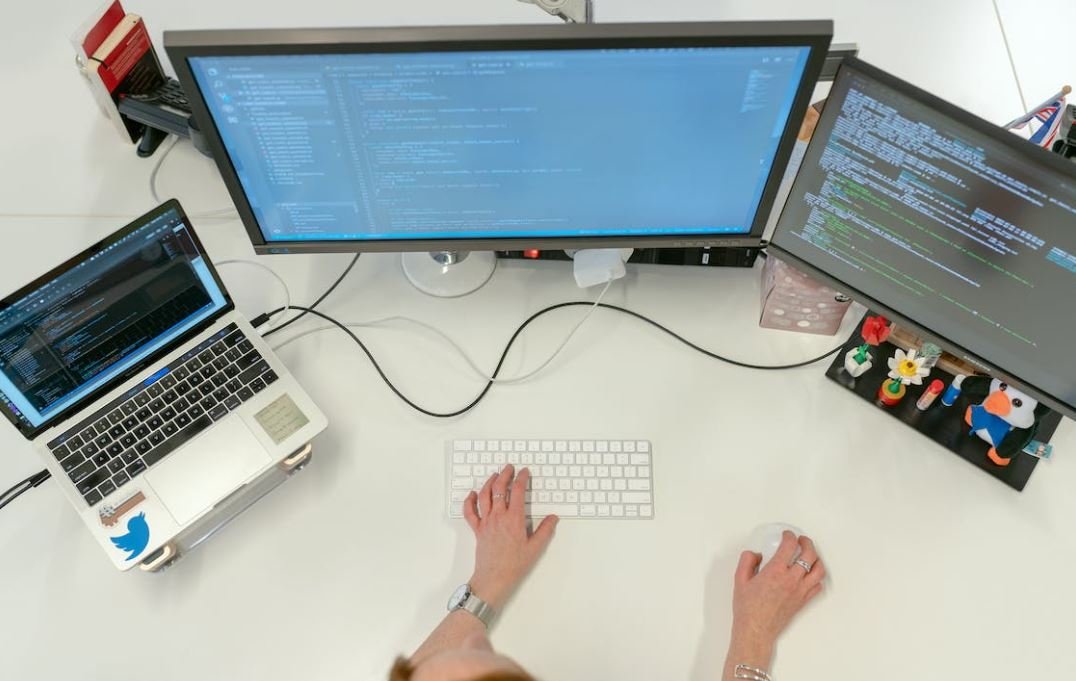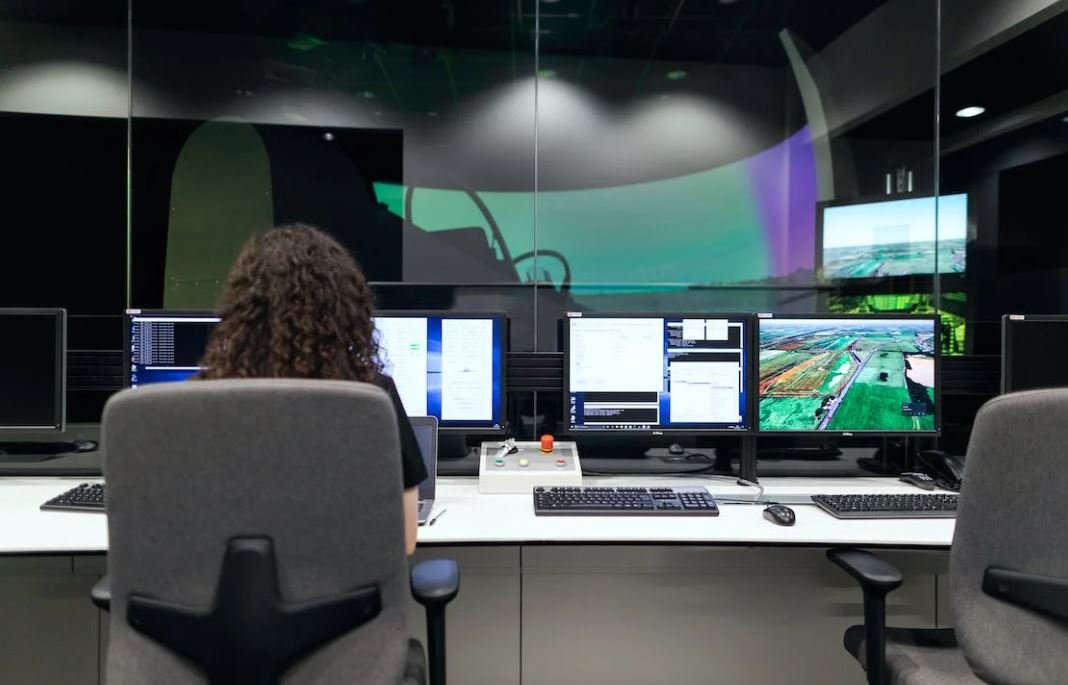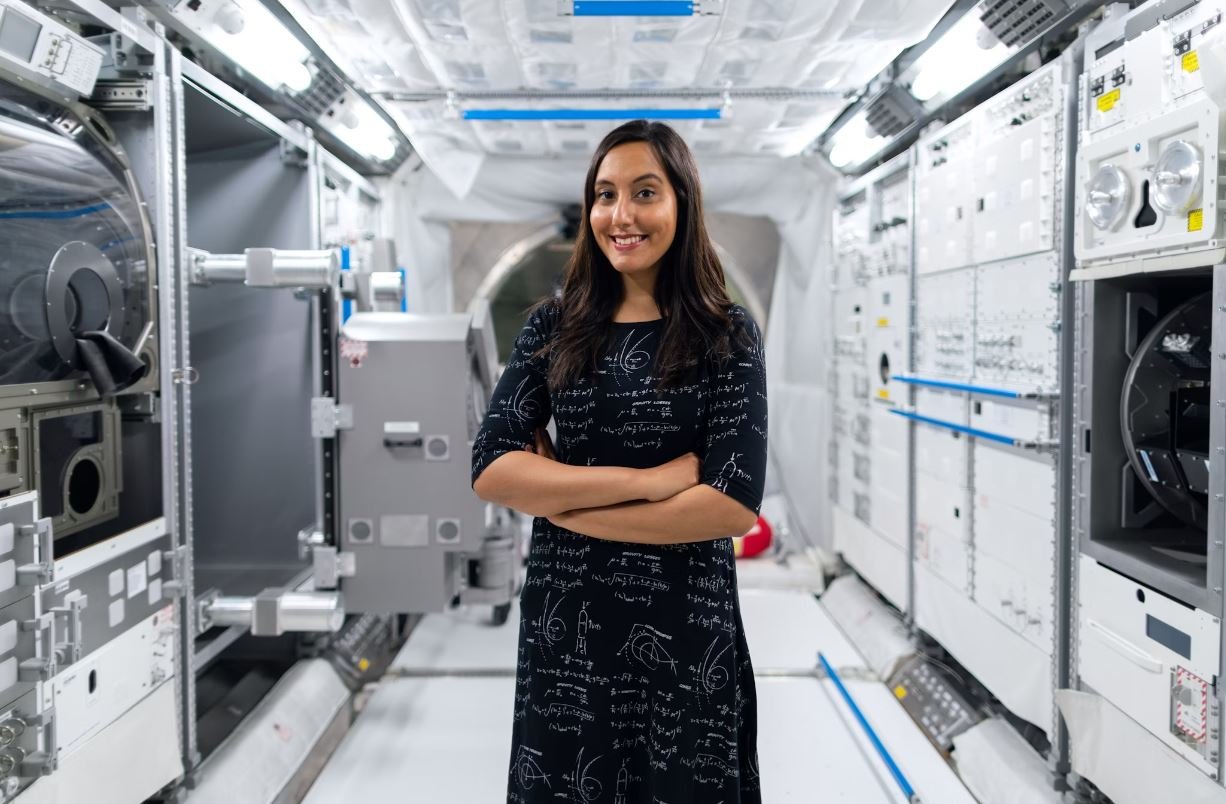AI Design
Artificial Intelligence (AI) design is a rapidly evolving field that combines the power of AI technology with the creativity of human designers to create innovative and personalized experiences. This article explores the key concepts and benefits of AI design, as well as its applications in various industries. From smart homes to personal assistants, AI design is revolutionizing the way we interact with technology.
Key Takeaways:
- AI design combines AI technology and human creativity to create innovative experiences.
- AI design has applications in various industries, including healthcare, automotive, and e-commerce.
- AI design enhances personalization, efficiency, and user engagement.
- AI design requires an iterative and collaborative approach between designers and AI systems.
**AI design** is more than just creating aesthetically pleasing interfaces—it leverages the power of AI to enhance user experiences and deliver personalized solutions. Through machine learning algorithms and natural language processing, AI design can understand user preferences, adapt to their needs, and provide tailored recommendations. *This level of personalization creates more engaging and meaningful interactions between users and technology.*
One of the key benefits of AI design is its ability to **improve efficiency**. AI algorithms can automate repetitive tasks, analyze data at scale, and make real-time decisions, allowing designers to focus on more creative and complex aspects of their work. Designers can leverage AI to generate design variations, conduct A/B testing, and gather user feedback more efficiently. *By automating mundane tasks, AI design frees up designers’ time for more critical thinking and problem-solving.*
Furthermore, AI design has significant implications for user engagement. With the ability to analyze vast amounts of user data, AI systems can identify patterns and trends, enabling designers to create experiences that resonate with their target audience. AI-powered chatbots and virtual assistants, for example, can provide instant and personalized support, enhancing customer satisfaction and loyalty. *The seamless integration of AI into design processes leads to more intuitive interfaces and better user experiences.*
Applications of AI Design
AI design has found applications in various industries, transforming the way we interact with technology. Here are some notable examples:
- **Healthcare**: AI design is being used to develop smart healthcare solutions, such as diagnosis assistance systems, predictive analytics, and personalized treatment plans.
- **Automotive**: AI design is revolutionizing the automotive industry with self-driving cars, advanced driver assistance systems, and intelligent infotainment systems.
- **E-commerce**: AI design is enhancing the online shopping experience through personalized recommendations, virtual try-on technologies, and intelligent search algorithms.
**Table 1: Applications of AI Design in Different Industries**
| Industry | AI Design Applications |
|---|---|
| Healthcare | Diagnosis assistance Predictive analytics Personalized treatment plans |
| Automotive | Self-driving cars Advanced driver assistance systems Intelligent infotainment systems |
| E-commerce | Personalized recommendations Virtual try-on technologies Intelligent search algorithms |
AI design is an iterative and collaborative process that requires designers to work closely with AI systems. Designers provide the AI with the necessary input, such as design guidelines, samples, and feedback, to train and refine the AI models. AI systems then generate design variations and suggestions that designers can review and iterate on. *This collaborative approach combines the best of human creativity with the analytical capabilities of AI to create compelling and user-centric designs.*
**Table 2: Components of AI Design Process**
| Component | Description |
|---|---|
| Data collection | Collecting relevant design data, user feedback, and preferences. |
| Training AI models | Training AI models using design data and feedback to generate design variations. |
| Iteration and refinement | Collaborating with AI systems to iterate on designs and incorporate human creativity and judgment. |
AI design has opened up new possibilities for the future of design, making it more accessible, efficient, and personalized. As AI technology continues to evolve, designers need to embrace these advancements and explore how they can integrate AI into their creative processes. By combining human ingenuity with AI’s analytical capabilities, designers can push the boundaries of innovation, creating experiences that truly resonate with users and meet their ever-changing needs.
**Table 3: Benefits of AI Design**
| Benefit | Description |
|---|---|
| Personalization | Creating tailored experiences based on user preferences and behavior. |
| Efficiency | Automating repetitive tasks and streamlining design processes. |
| User engagement | Delivering more intuitive and seamless user experiences. |

Common Misconceptions
Misconception 1: AI Design is only about creating technology
One common misconception about AI design is that it is solely focused on creating technological solutions. While technology is an important aspect, AI design encompasses much more than just the technical implementation. AI designers need to understand user experience, psychology, and ethics to create AI systems that are effective and user-friendly.
- AI design involves a deep understanding of human behavior and user needs.
- User experience plays a crucial role in AI design, ensuring the seamless interaction between humans and AI systems.
- Ethical considerations are essential in AI design to prevent bias and discrimination.
Misconception 2: AI Design replaces human creativity
Another common misconception is that AI design replaces human creativity. AI is a tool that can augment human creativity and improve the design process. While AI can generate ideas and assist in design tasks, human designers are still needed to make informed decisions and bring unique perspectives to the design process.
- AI can assist in generating design alternatives and exploring possibilities quickly.
- Human creativity is still essential in making design decisions and bringing intuition and aesthetic judgment.
- AI design tools can enhance the creative process by automating repetitive tasks.
Misconception 3: AI Design is all about efficiency and automation
One misconception about AI design is that it is solely focused on efficiency and automation. While efficiency and automation are significant benefits of AI, AI design also considers factors such as user satisfaction, engagement, and emotional connection. Designers aim to create AI systems that go beyond operational efficiency and provide meaningful experiences to users.
- AI design focuses on creating user-centered experiences that are intuitive and enjoyable.
- User satisfaction and emotional connection are important considerations in AI design.
- Efficiency and automation are benefits of AI design, but not the sole focus.
Misconception 4: AI Design is only for technical experts
Some people believe that AI design is only for technical experts with programming skills. However, AI design is a multidisciplinary field that requires collaboration between designers, researchers, psychologists, and engineers. Each member brings their expertise to ensure the successful design and implementation of AI systems.
- AI design is a collaborative process involving professionals from various disciplines.
- Designers without deep technical skills can still contribute to AI design through their understanding of user needs and creative problem-solving.
- Technical experts work alongside other professionals to translate design concepts into working AI systems.
Misconception 5: AI Design leads to job loss
Lastly, a common misconception is that AI design will lead to widespread job loss in creative industries. While AI may automate certain tasks, it also creates new opportunities and roles. AI designers, for example, will play a vital role in designing and shaping AI systems, ensuring their ethical and effective use.
- AI design creates new career opportunities in designing and managing AI systems.
- The role of AI designers will evolve to focus on creativity, empathy, and ethical considerations.
- AI can augment human abilities and create new industries, leading to job creation.

How AI Enhances User Experience in Retail
AI has had a profound impact on various industries, including retail. By leveraging AI technologies, retailers can provide a more personalized and seamless shopping experience to their customers. The following table highlights some of the ways AI improves user experience in the retail sector.
| Improved User Experience | Description |
|---|---|
| Virtual Personal Stylist | AI-powered virtual stylists offer personalized fashion recommendations based on individual preferences, body type, and current trends. |
| Smart Search and Recommendations | By analyzing user behavior and preferences, AI algorithms suggest relevant products, making it easier for customers to find what they need. |
| Chatbots | AI-powered chatbots assist customers with queries, providing instant customer support and information about products or services. |
| Visual Search | Using AI and computer vision, customers can upload images to find similar products, simplifying the search process and enhancing convenience. |
| Dynamic Pricing | AI algorithms monitor various factors to optimize prices in real-time, ensuring customers get the best deals and driving sales. |
The Evolution of AI in Healthcare
The healthcare industry has experienced remarkable advancements with the utilization of AI. This table showcases the evolving role of AI in healthcare and its impact on patient care and treatment.
| AI in Healthcare | Benefits |
|---|---|
| Medical Imaging Analysis | AI algorithms assist in interpreting medical imaging results, improving diagnostics accuracy and detection of anomalies. |
| Drug Discovery | AI enables faster identification of potential drug candidates, minimizing development time and expediting the delivery of new treatments. |
| Virtual Nurses | AI-powered virtual nurses provide patient monitoring, reminders for medications, and answer basic healthcare questions. |
| Robot-Assisted Surgery | AI-powered robots assist surgeons during complex procedures, enhancing precision and reducing the risk of human errors. |
| Healthcare Analytics | AI analyzes vast healthcare datasets to identify patterns, predict disease outbreaks, and support evidence-based decision making by medical professionals. |
AI and Cybersecurity: Defending Against Emerging Threats
Cybersecurity is a constant concern in the digital age. AI has emerged as a crucial tool in defending against evolving cyber threats. This table provides insights into how AI technology strengthens cybersecurity.
| Cybersecurity with AI | Impact |
|---|---|
| Threat Detection | AI algorithms analyze patterns and behaviors to quickly detect cyber threats, reducing response times to potential attacks. |
| Anomaly Detection | AI-based anomaly detection systems identify and flag suspicious activities, such as irregular network traffic or unauthorized access attempts. |
| Automated Security Patching | AI can automatically analyze vulnerabilities and apply patches, minimizing the impact of potential exploits. |
| User Behavior Analysis | AI algorithms analyze user behavior to establish normal patterns, enabling the identification of anomalous activities that might indicate an ongoing attack. |
| Malware Detection | AI identifies and blocks malware by analyzing code patterns and behavior, providing enhanced defense against ever-evolving threats. |
Transforming Manufacturing with AI Technology
The integration of AI technology in manufacturing processes has revolutionized the industry, resulting in increased efficiency and productivity. This table offers examples of how AI is transforming the manufacturing sector.
| AI in Manufacturing | Advantages |
|---|---|
| Quality Control | AI systems inspect and identify defects in real-time, helping maintain high quality and minimizing the need for manual inspection. |
| Predictive Maintenance | AI algorithms analyze data from sensors to predict equipment failures, enabling preventive maintenance and reducing costly downtime. |
| Optimized Supply Chain | AI optimizes inventory management, demand forecasting, and logistics, ensuring efficient allocation of resources and reducing costs. |
| Autonomous Robots | AI-powered robots automate repetitive and dangerous tasks, improving worker safety and increasing overall efficiency on the assembly line. |
| Machine Learning in Production Planning | AI-based machine learning models analyze historical data to optimize production schedules, maximizing output and minimizing waste. |
Revolutionizing Transportation with AI
With AI advancements, transportation systems are becoming smarter, safer, and more efficient. The table below illustrates how AI is revolutionizing the transportation industry.
| AI in Transportation | Impacts |
|---|---|
| Self-Driving Vehicles | AI technology enables autonomous vehicles that can improve road safety, reduce traffic congestion, and enhance transportation efficiency. |
| Traffic Management | AI-based traffic management systems analyze real-time data to optimize traffic flow, reduce delays, and adapt to changing conditions. |
| Smart Logistics | AI optimizes supply chain logistics by predicting demand, managing inventory, and determining the most efficient routes and transportation modes. |
| Ride-Hailing Apps | AI algorithms used in ride-hailing apps match drivers and passengers, optimize routes, and calculate fares, making transportation more convenient. |
| Urban Analytics | AI analyzes data from multiple sources to help cities improve urban planning, optimize public transportation, and enhance overall mobility. |
AI in Financial Services: Revolutionizing Banking and Finance
AI is reshaping the financial sector, leading to enhanced services, improved risk management, and increased operational efficiency. Explore the table below for key AI applications in finance.
| AI in Finance | Applications |
|---|---|
| Fraud Detection | AI algorithms detect anomalies in transactions, flagging potentially fraudulent activities and reducing financial risks. |
| Robo-Advisors | AI-powered robo-advisory systems provide automated financial advice based on individual goals, risk tolerance, and market analysis. |
| Credit Scoring | AI models evaluate creditworthiness, analyzing various factors to determine credit scores and streamline loan approval processes. |
| Algorithmic Trading | AI algorithms execute trades based on predefined strategies, leveraging real-time market data and historical patterns. |
| Customer Service | AI-powered chatbots assist customers with account inquiries, transaction information, and personalized financial advice. |
AI in Education: Transforming Learning Experiences
AI technologies are revolutionizing education, providing personalized learning experiences and facilitating access to knowledge. The following table highlights the impact of AI in education.
| AI in Education | Outcomes |
|---|---|
| Adaptive Learning | AI systems adapt educational content and pace based on individual student progress, enhancing engagement and knowledge retention. |
| Educational Chatbots | AI-powered chatbots answer student questions, provide learning resources, and offer personalized academic guidance. |
| Automated Grading | AI assesses and grades assignments and tests, saving teachers time and providing quick feedback to students. |
| Virtual Reality Learning | AI combines with virtual reality technology to create immersive learning experiences, enabling students to explore and interact with complex subjects. |
| Language Learning | AI-powered language learning tools assist students with vocabulary, grammar, and pronunciation, creating personalized language courses. |
AI and Agriculture: Innovations for Sustainable Farming
AI is transforming the agricultural sector, bringing efficiency, precision, and sustainability to farming practices. The table below showcases the impact of AI on agricultural innovations.
| AI in Agriculture | Advancements |
|---|---|
| Smart Irrigation | AI analyzes weather data, soil conditions, and plant needs to optimize irrigation, reducing water waste and improving crop yields. |
| Precision Farming | AI-driven systems monitor and analyze crop health, recommending precise interventions such as fertilizer application, pest control, and yield prediction. |
| Autonomous Farming | AI-powered robots and drones perform farming tasks, such as planting, harvesting, and monitoring, with precision and efficiency. |
| Livestock Monitoring | AI-based systems monitor animal behavior, health conditions, and feeding patterns, enabling early disease detection and improved livestock management. |
| Crop Disease Detection | AI algorithms analyze images of crops to detect signs of diseases or nutrient deficiencies, allowing timely interventions to prevent crop loss. |
AI and Energy Sector: Optimizing Power Generation
The energy industry is harnessing AI for smart grid management, renewable energy integration, and energy efficiency. The following table summarizes how AI is optimizing power generation.
| AI in Energy | Optimizations |
|---|---|
| Smart Grid Management | AI analyzes energy consumption patterns, predicts demand, and optimizes grid operations, improving reliability and reducing costs. |
| Renewable Energy Forecasting | AI models utilize weather data, historical patterns, and other factors to forecast renewable energy generation, enabling efficient integration into the grid. |
| Energy Consumption Optimization | AI algorithms analyze consumer behavior and real-time data to optimize energy usage, reducing waste and promoting sustainability. |
| Predictive Maintenance for Power Plants | AI monitors equipment health, predicts failures, and recommends maintenance actions, minimizing downtime and avoiding costly breakdowns. |
| Smart Energy Storage | AI algorithms optimize energy storage systems, enhancing efficiency, load balancing, and grid stability. |
Artificial intelligence has become an integral part of numerous industries, revolutionizing processes, services, and customer experiences in profound ways. From retail to healthcare, cybersecurity to agriculture, AI’s impact is pervasive. Through advanced algorithms and machine learning, AI enables improvements in decision-making, efficiency, and personalization. As AI continues to evolve, we can expect further advancements and a continued transformation of how we work, live, and interact with the world around us.
AI Design – Frequently Asked Questions
How does artificial intelligence impact design processes?
Artificial intelligence (AI) has revolutionized design processes by automating repetitive tasks, enhancing creativity, and providing data-driven insights. It can analyze massive amounts of data to detect patterns, generate design variations, and optimize user experiences.
What are the key benefits of incorporating AI in design?
Integrating AI in design brings several benefits, including increased efficiency, improved personalization, enhanced user experiences, and accelerated decision-making processes. AI can automate design tasks, personalize content, analyze user behavior, and make data-backed recommendations, leading to better design outcomes.
How can AI contribute to user experience (UX) design?
AI plays a crucial role in UX design by analyzing user preferences and behaviors, predicting user needs, and providing personalized experiences. It can analyze data from user interactions, demographics, and feedback to generate user personas, inform information architecture, and create tailored interfaces that cater to specific user needs.
What are some common AI design techniques?
AI design techniques include machine learning, natural language processing, computer vision, and generative modeling. Machine learning algorithms enable computers to learn from data, while natural language processing allows computers to understand and generate human language. Computer vision enables computers to interpret and analyze visual content, while generative modeling generates new designs based on existing examples.
Can AI replace human designers?
No, AI cannot completely replace human designers. While AI can automate certain design tasks and provide valuable insights, human designers bring creativity, intuition, and empathy to the design process. AI and human designers can work collaboratively, with AI augmenting human capabilities and automating repetitive tasks, allowing designers to focus on more creative and strategic aspects of design.
Are there ethical considerations when using AI in design?
Yes, there are ethical considerations when using AI in design. Designers must ensure that AI systems are fair, unbiased, and respect user privacy. They should consider the ethical implications of using AI in decision-making processes, understand the potential impacts on diverse user groups, and be transparent about how AI is used in the design process.
How can AI help in design research?
AI can assist in design research by analyzing vast amounts of data, identifying patterns, and generating insights. It can automate data collection, analyze user feedback, and identify user preferences to inform design decisions. AI-powered tools can also assist in user testing, sentiment analysis, and data visualization, enabling designers to make better-informed decisions.
What are the challenges of implementing AI in design?
Implementing AI in design can be challenging due to technical complexities, data quality issues, and the need for skilled AI professionals. Designers may face challenges in integrating AI into existing workflows, ensuring data privacy and security, and interpreting AI-generated outputs. It requires a balance between human judgment and AI assistance to achieve optimal design outcomes.
How do AI-based design systems learn and improve over time?
AI-based design systems learn and improve over time through a process called machine learning. These systems are trained on vast amounts of data to identify patterns and make predictions. As they receive feedback and are exposed to new data, they continually refine their algorithms, leading to improved performance and better design recommendations. Regular updates and refining of the training data also contribute to the system’s learning and improvement.
What are some real-world examples of AI-driven design applications?
Some real-world examples of AI-driven design applications include automated website design platforms, AI-powered chatbots, personalized recommendation systems, and virtual reality (VR) experiences. These applications leverage AI algorithms to automate design tasks, provide personalized experiences based on user behavior, and enhance the overall user interface and interaction.




